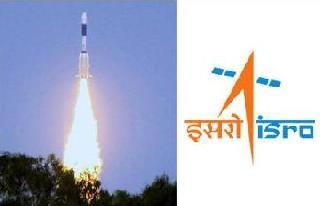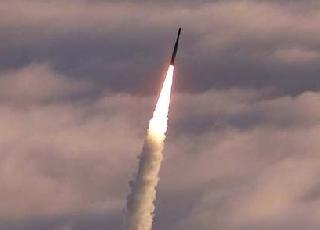
NEW DELHI (PTI): The Indian Space Research Organisation (ISRO) plans to launch 58 space missions, including sending spacecraft to Moon and Mars, an exclusive satellite to keep a round-the-clock watch on the country and deploy 500 transponders in the next five years.
The space agency also aims to deploy its own version of the Global Positioning System by putting into orbit a constellation of seven satellites which would form the Indian Regional Navigational Satellite System (IRNSS).
According to the 12th Five Year Plan, approved by the Indian Cabinet last week, ISRO plans to add 400 transponders to the existing 187 to meet the growing demand from DTH operators, satellite mobile communications and new generation broadband VSAT systems.
An indicative plan outlay of Rs 39,750 crore for the 12th Plan has been made for the Department of Space.
"Overall, 58 missions are planned for realisation during 12th Plan period which includes 33 satellite missions and 25 launch vehicle missions," the 12th Plan document says.
The space agency is also designing a special 'eye-in-the- sky' -- Geo-Imaging Satellite or GISAT -- to be stationed 36,000 km above to maintain round-the-clock vigil and assist state authorities to tackle natural disasters, floods and forest fires and keep a watch over the country's sensitive borders.
Missions initiated in the 11th Plan like Chandrayaan-II, Astrosat-1 and Aditya-1, are also expected to set forth on their respective destinations into space over the next five years.
As part of Chandrayaan-II, ISRO plans to land a rover on the lunar surface and put a satellite in an orbit around the Moon. The mission is expected to be launched in 2014.
The wheeled rover will move on the lunar surface and pick up soil and rock samples for on-site chemical analysis and the data will be sent to Earth using the Chandrayaan-II orbiter.
The launch of this mission depends on the success in developing the indigenous cryogenic engine which has been delayed for quite some time now.
Aditya-1 will be dedicated to solar coronal studies and will contain Visible Emission Line Space Solar Coronagraph -- the main payload to study the coronal dynamics.
Astrosat-1 is India's first satellite dedicated to astronomy, which will scan the universe in x-ray, ultraviolet and visible light bands.
Also part of the 12th Plan is the development of the next generation satellite launcher, the GSLV Mk-III, which will help ISRO put heavier satellites into orbit.
Another ambitious mission is sending a spacecraft to Mars, an initiative announced by Prime Minister Manmohan Singh in his Independence Day speech this year.
"India's first Mission to Mars during 2013 would be important more from the technological perspective viz. entire mission design, planning, management and operations, and communication from a distance of nearly 400 million km," the Plan document says.
ISRO plans to put a satellite in a 500 km x 80,000 km orbit around Mars which will carry nearly 25 kg of scientific payloads on board.
The space agency will also pursue mission POLIX to study the X-ray polarisation from bright x-ray emitting objects during the 12th Plan period.
 Previous Article
Previous Article Next Article
Next Article












The Indian Air Force, in its flight trials evaluation report submitted before the Defence Ministry l..
view articleAn insight into the Medium Multi-Role Combat Aircraft competition...
view articleSky enthusiasts can now spot the International Space Station (ISS) commanded by Indian-American astr..
view article